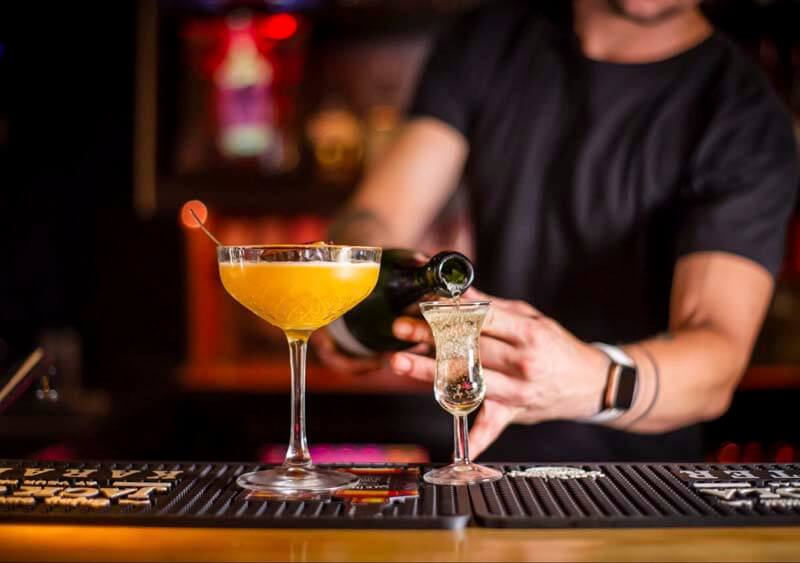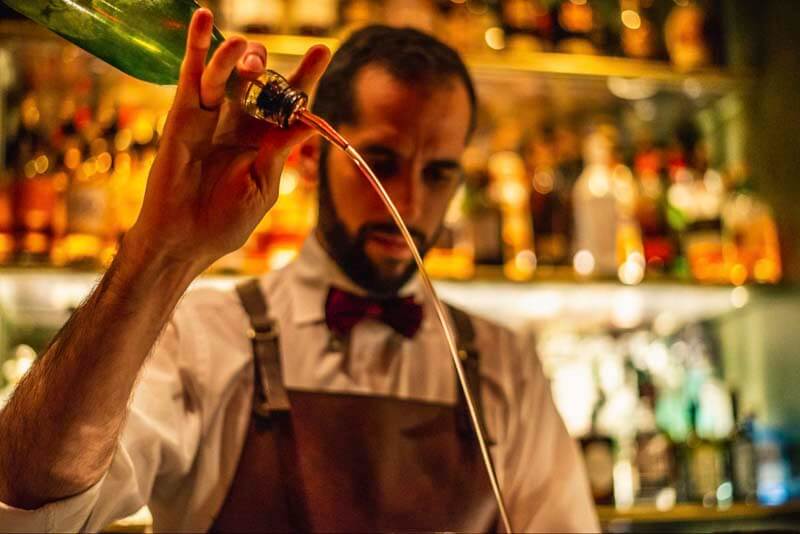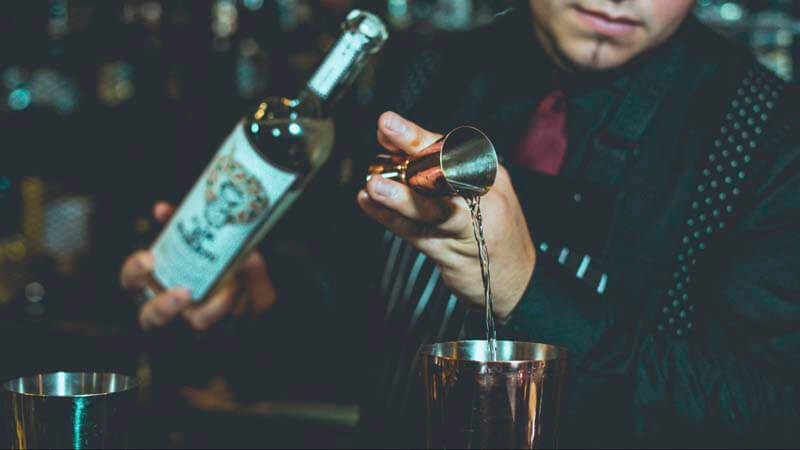A Guide to a Standard Liquor Pour

November 9, 2022

There is nothing better than a full bar. As a bar owner, witnessing patrons sipping cocktails and engaging in conversation is a sign of repeat business and a profitable day.
According to a National Restaurant Association study, the typical bartender can make thirty-six drinks in an hour (Ward III). To get the most out of your liquor bottles and maximize your margins on a busy night, it's critical that your bartenders are well-versed in standard liquor pours.
We're here to make sure your staff understands the standard liquor pouring techniques so they can consistently make the best-tasting cocktails for your customers.
What We’ll Cover in This Piece:
What Is a Standard Liquor Pour?

The National Institute of Health’s guidelines states that a standard liquor pour at most bars across the U.S. is 1.5 ounces.
It's crucial to maintain a consistent liquor pour since, in addition to preventing you from overserving customers, it's the ideal quantity for creating a well-balanced drink.
Plus, an accurate pour means that you’re not over-using your liquor supply and are keeping your margins in check.
There are three ways to identify a standard pour: as a shot, neat, or in a cocktail.
1. Shot
This can refer to a 1.5-ounce pour of plain liquor or a mixed shot.
Shots are typically served in a shot glass.
2. Neat
A shot pour and a neat pour are separated by half an ounce. A tumbler, snifter, or low-ball glass is used to serve 2-ounce standard neat pours.
Those who prefer a neat pour frequently order a higher-quality spirit and sip it slowly, as opposed to a normal poured shot of booze, which is supposed to be rapidly poured and drunk.
Since you are getting more alcohol, neat portions usually cost a little more, but the glassware makes the biggest difference.
3. In a Cocktail
The quantity of liquor will change depending on the cocktail you're mixing. For instance, a Long Island Iced Tea requires more than six ounces of alcohol, yet an Old Fashioned only needs roughly two ounces of rye or whiskey.
This is the time for your bartender to choose their favorite measuring tools to ensure they create flawlessly balanced cocktails each and every time.
The 2 Best Tools to Ensure a Standard Pour
There are two tools that you can invest in to help ensure your bartenders are serving the accurate amount of tequila in margaritas and vodka in your martinis, for example.
A Jigger Tool
A jigger is a common bar accessory that serves as a measuring cup for mixed drinks. A jigger can be used to precisely measure the volume of liquid that is actually being poured. It enables bartenders to maintain consistency with correct measurements while lowering over-pouring situations.
Weighing between 0.5 and 2.5 ounces, jiggers have two sides with different capacities on either end. Which is one of their main advantages, because it allows bartenders to quickly mix drinks of varying sizes with just one tool.

A Pour Spout
A bartender may pour more accurately and quickly with the help of a pour spout. These cone-shaped caps that protrude from liquor bottles save a bartender time behind the bar because they don’t need to constantly unscrew lids.
There are different varieties of pour spouts. Some are standard bottle toppers that are metal or plastic, and some are even digital!
The digital ones have the capability to connect to your POS system wirelessly in order to offer a real-time analysis of your liquor supply.
Each time the bottle is tipped upside down, the pour spout discharges a specific volume of liquid (usually the typical 1.5- or 2-ounce shot).
Many seasoned bartenders use this tool instead of a jigger because it allows them to prepare a lot more cocktails in a short amount of time while still being extremely accurate.
Why Standard Liquor Pours Keep Your Business Profitable

Did you know that there are only sixteen 1.5-fl-oz shots available in a typical 750mL bottle of gin? If your bartenders are over-pouring, you can imagine how rapidly a bottle may be kicked given that a typical martini calls for two shots of gin.
Overpouring has a negative impact on a bar's menu and revenue. Calculating your pour cost can help you retain profits by enabling you to compare the cost of a drink's ingredients to its selling price at the drink level.
So how do you calculate the pour cost for a cocktail?
Your pour cost is calculated by dividing the amount of inventory you're utilizing, expressed in dollars, by the amount you're selling. A bar's typical pour costs range from eighteen percent to twenty-four percent, but the majority of bar owners think twenty percent is a good target.
Pro Tip: Pour costs are proven more effective when reviewed weekly because it enables managers to spot trends and handle problems before they arise.
Make sure your bartender has easy-to-access reference sheets for liquor pour sizes so they can consistently make precisely proportioned cocktails.
By using the right measuring tools, understanding the cost of a standard liquor pour, and setting clear expectations with your bartenders, you can ensure that you make flawlessly balanced beverages every time while maximizing your chances to increase your profits.
Unlock Your Beer and Beverage Potential!
Design your beer and food menus and publish them anywhere! Print, QR code, or digital signage - the possibilities are endless with Untappd for Business!
Schedule a demo or start a free 7 day trial today!
